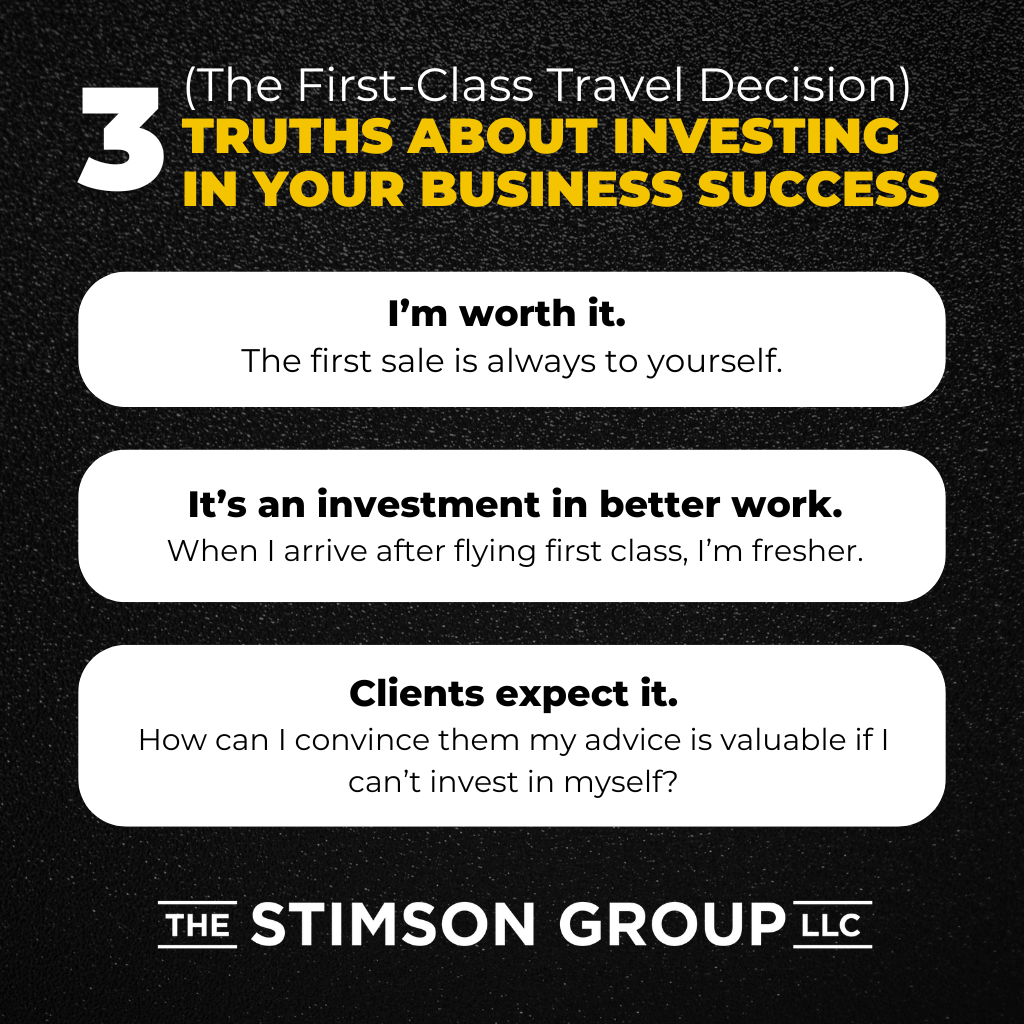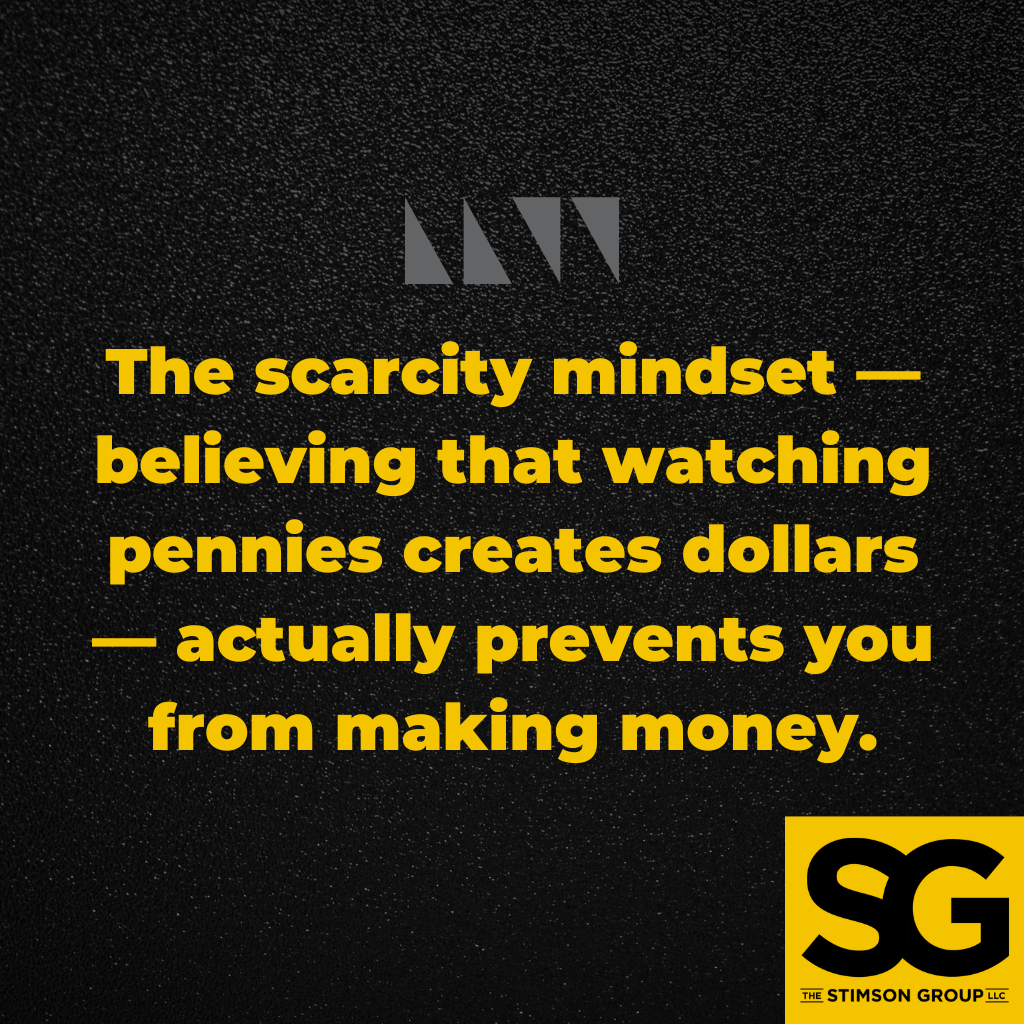
Listen instead on your Monday Morning Drive:
Last year, I caught an early morning flight home from InfoComm. I settled into my first-class seat, looked across the aisle, and spotted an old friend — someone who worked for me years ago and now owns his own business.
As we got to talking, he pointed out his business partner — another former employee of mine — sitting two rows ahead. They had a third team member in first class, too.
What struck me most was their comfort level. No excited whispers about upgrades or borrowed seats — they’d clearly bought their tickets expecting to sit in this section. Here they were, men in their late 40s and early 50s, flying first class after a successful trade show visit. They’d probably go home and take their spouses out for a nice dinner after being gone all week.
They were doing exactly what successful business owners should do.
The False Promise of Endless Sweat Equity
The myth of sweat equity suggests you should fear spending more on something that promises better results. Instead, find a less expensive way, put your energy into it, and settle for average results.
I’ve watched countless HGTV shows where couples tour houses, pick one, then spend 90 minutes knocking out kitchen cabinets to “put sweat equity into their home.” My brother and I used to do just that: buy properties and put our time and energy into them. We’d recoup the money later when the property was sold or rented out.
But sweat equity is a short-term proposition. When it becomes a mindset, we lose touch with its purpose.
When Practicality Becomes Prison
I knew another successful business owner who’s since sold his company and retired. He always flew Southwest Airlines because it was a cheap option back then. He brought two peanut butter and jelly sandwiches on every flight, avoiding airport food expenses.
We’d tease him about those sandwiches. “Got your PB&J?” He’d pull them out proudly.
But this wasn’t sweat equity — it was practicality. This same person never hesitated to spend money at fine steakhouses with friends and family. He knew how to be a successful business owner.
The PB&J wasn’t penny-pinching — it was a lifestyle choice he enjoyed.
The Reality of Business Costs
Many of you have been in business for decades and still short-change yourselves, particularly with travel.
“Travel costs are out of control,” you say. Really? I’ve studied P&Ls for 40 years. Travel costs as a percentage of revenue haven’t changed much.
A full-service event production company doing $10 million in revenue typically spends 4% on travel. Some might hit 5%, but that’s a different problem. The ratios stay consistent. Yes, travel costs jumped in 2022, but as a percentage of revenue, it didn’t move the needle much.
The Comparison Trap
Your perception of cost always comes down to “compared to what?”
A $900 airline ticket might seem expensive next to a $250 ticket. But are they the same? That $250 ticket will get you there eventually, squeezed into an uncomfortable seat with questionable service.
Sweat equity is just a means to an end. If you don’t reach that end, something’s wrong. If you’re 10 years into your business and still making sweat equity decisions based on money, you’ve made a serious mistake.
The Money Is There
For many of you, the only thing that needs to change is your mindset. The money exists — as a business owner, it’s going into your pocket one way or another.
When you take your family on vacation, do you fly economy on Southwest or head to a nice resort in first class? That’s a choice. You can probably afford better, and you certainly deserve better.
After all, isn’t this why we chose to own businesses? So we wouldn’t have to make the cheap choices?
Sweat equity gets us started faster. It reduces our initial investment, which means we start earning sooner. But once we have an established, profitable business, some of those profits should go toward treating ourselves well.

The First-Class Decision
I fly first class. It wasn’t easy at first, and I started before it made perfect financial sense, but it was the right business decision.
Here’s what I learned after committing to first-class travel:
- I’m worth it. The first sale is always to yourself. If you don’t think you’re worth that first-class ticket, nothing else matters. If you have doubts about your worth, you’ll work harder. You’ll redouble your efforts until you feel like you’ve earned it.
- It’s an investment in better work. When I arrive after flying first class, I’m fresher. If I need to work the same day I travel, I want to be at my best. My clients deserve that. I deserve that.
- Clients expect it. My clients want to fly first class, too. How can I convince them my advice is valuable if I can’t invest in myself? Similarly, your clients wonder why you don’t fly first class because they feel they pay you good money. If you’re not successful enough to fly first class, they might think they hired you because you’re cheap — and they’ll treat you as such.
Stop Acting Like a Startup
The scarcity mindset — believing that watching pennies creates dollars — actually prevents you from making money.
Choose abundance thinking instead. Create abundance to attract more abundance. People want to do business with successful people, not penny-pinchers.
If your CPA says to pay yourself $120,000 annually for tax purposes, but you’re taking $300,000–$1 million in draws at year’s end because you made good money, you’re living a higher-level lifestyle. You’ve earned it.

The True Prosperity Message
This is my version of the prosperity gospel, but with a key difference: I want you to earn it. I want you to recognize what it takes to earn it. Then, I want you to pay yourself accordingly.
You deserve it.





Leave a Reply